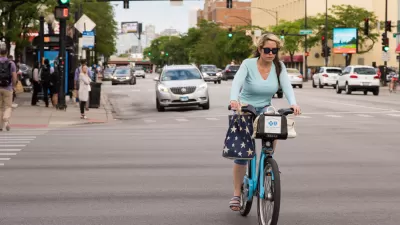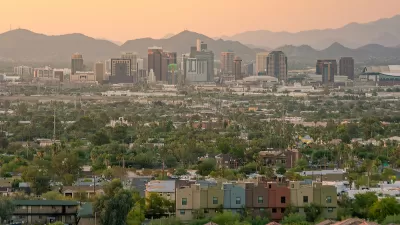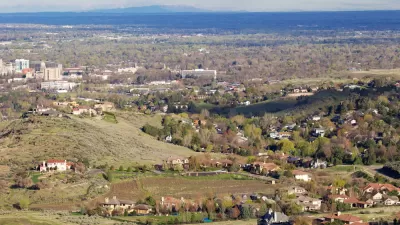Smart growth advocates have been making this point for years, but a new report from the Washington, D.C. regional planning organization provides more evidence for the strategic location of population and job growth.

The Transportation Planning Board—the metropolitan planning organization (MPO) for metropolitan Washington D.C.—recently released a study linking transportation and land use planning, according to an article by David Alpert.
Actually, the "Long-Range Plan Task Force: Draft Analysis Results" report analyzed ten possible transportation improvements for their potential for enabling more jobs and housing in the eastern reaches of the Washington, D.C. region, but only one of those options had to do with land use. Nonetheless, the report found that a balanced approach to regional land use would be the second-most effective approach to reducing congestion, increasing housing options, and improving access to jobs.
"Steering more of the jobs and housing growth (especially jobs) to the east side of the region (like east of the Anacostia River, eastern Montgomery, Prince George's, Alexandria, and Route 1 in Fairfax) and putting more of that growth near transit," would cut traffic delays by 18 percent, according to Alpert's explanation of the report's findings. Other effective transportation planning improvements include travel demand management and an express travel network.
FULL STORY: The best way to improve transportation in our region is…

Maui's Vacation Rental Debate Turns Ugly
Verbal attacks, misinformation campaigns and fistfights plague a high-stakes debate to convert thousands of vacation rentals into long-term housing.

Planetizen Federal Action Tracker
A weekly monitor of how Trump’s orders and actions are impacting planners and planning in America.

In Urban Planning, AI Prompting Could be the New Design Thinking
Creativity has long been key to great urban design. What if we see AI as our new creative partner?

King County Supportive Housing Program Offers Hope for Unhoused Residents
The county is taking a ‘Housing First’ approach that prioritizes getting people into housing, then offering wraparound supportive services.

Researchers Use AI to Get Clearer Picture of US Housing
Analysts are using artificial intelligence to supercharge their research by allowing them to comb through data faster. Though these AI tools can be error prone, they save time and housing researchers are optimistic about the future.

Making Shared Micromobility More Inclusive
Cities and shared mobility system operators can do more to include people with disabilities in planning and operations, per a new report.
Urban Design for Planners 1: Software Tools
This six-course series explores essential urban design concepts using open source software and equips planners with the tools they need to participate fully in the urban design process.
Planning for Universal Design
Learn the tools for implementing Universal Design in planning regulations.
planning NEXT
Appalachian Highlands Housing Partners
Mpact (founded as Rail~Volution)
City of Camden Redevelopment Agency
City of Astoria
City of Portland
City of Laramie





























